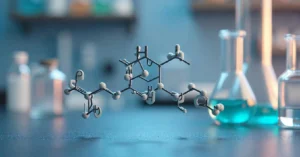Introduction to Hcooch Ch2 H2O
Hcooch Ch2 H2O is a chemical compound that plays a crucial role in various chemical reactions and processes. The molecular formula indicates the presence of carbon, hydrogen, and oxygen atoms, specifically one carbonyl group (C=O) attached to a methylene (-CH2-) group, along with a hydroxyl group (-OH) linked to water (H2O). This unique composition results in a compound that exhibits various properties and behaviors significant in both laboratory and industrial settings.
The structure of Hcooch Ch2 H2O shows its potential for versatility, making it an important subject of study. Its molecular framework allows it to participate in a range of chemical reactions, including esterification, oxidation, and hydration processes. Understanding its structure is essential for researchers, as it offers insights into how this compound can interact with other substances, leading to various applications in fields such as organic synthesis, pharmaceuticals, and material science.
Furthermore, researchers are particularly interested in Hcooch Ch2 H2O due to its ability to serve as a solvent and a reagent in several chemical reactions. Its significance extends to applications in creating biodegradable materials, compounds for drug delivery, and eco-friendly cleaning agents. As industries increasingly focus on sustainable practices, compounds like Hcooch Ch2 H2O are drawing attention due to their potential to replace more harmful substances. The understanding of its molecular structure and properties provides a valuable foundation for advancements in these applications.
In summary, Hcooch Ch2 H2O is not just a chemical compound; it represents a key element in the ongoing exploration of new materials and processes in chemistry. Recognizing its structure and applications equips professionals and students with the knowledge necessary to harness its full potential in various scientific endeavors.
Chemical Properties of Hcooch Ch2 H2O
Hcooch Ch2 H2O, also known as hydroxycarboxaldehyde, exhibits several distinct chemical properties that can be understood through its molecular structure. The presence of both hydroxyl (-OH) and aldehyde (-CHO) functional groups contributes to its reactivity, allowing it to participate in a variety of chemical reactions. In particular, the hydroxyl group enhances the molecule’s polarity, leading to increased solubility in water, while the aldehyde group enables it to undergo oxidation and reduction reactions efficiently.
The stability of Hcooch Ch2 H2O is generally good under standard laboratory conditions; however, it can be susceptible to polymerization and degradation when exposed to strong acids or bases. In acidic environments, the molecule may undergo hydrolysis, leading to the formation of various hydrolytic products. Meanwhile, exposure to strong oxidizing agents can facilitate further oxidation of the aldehyde group, resulting in the formation of carboxylic acids. This reactivity makes Hcooch Ch2 H2O an important candidate in organic synthesis, where controlled reactions can produce desired end products.
Another noteworthy aspect of Hcooch Ch2 H2O is its interaction with other chemical substances. The molecule has shown favorable coordination properties with metal ions, making it a viable chelating agent. This ability can be exploited in various applications, such as in analytical chemistry for the detection of specific metal ions. Furthermore, due to its small size and functional groups, Hcooch Ch2 H2O can act as a building block for more complex organic molecules, facilitating the synthesis of larger compounds in laboratory settings.
These characteristics underline the significance of Hcooch Ch2 H2O in the field of organic chemistry, opening avenues for both research and practical applications. Ongoing studies continue to explore its potential uses, driven by its unique structural properties and reactivity.

Applications of Hcooch Ch2 H2O in Industries
Hcooch Ch2 H2O, known for its unique structural properties, has found diverse applications across various industries, thereby playing a crucial role in modern production processes. In the pharmaceutical sector, Hcooch Ch2 H2O serves as an essential solvent and reagent in drug formulation and synthesis. Its ability to enhance solubility and bioavailability of active pharmaceutical ingredients has made it indispensable in the development of effective medications. For example, it has been utilized in the formulation of certain anti-cancer drugs, where it aids in improving the stability and efficacy of the compounds.
In agriculture, Hcooch Ch2 H2O is utilized as an effective agent in pesticide and herbicide formulations. Its properties allow for better penetration and adherence of the active ingredients to plant surfaces, which improves the efficacy of these products. Furthermore, research has shown that integrating Hcooch Ch2 H2O in agricultural applications can reduce the overall quantity of chemicals required, enhancing sustainability in farming practices while maintaining crop protection efficiency.
Furthermore, in materials science, Hcooch Ch2 H2O has been employed in the manufacturing of polymers and composites. This compound plays a vital role in modifying the physical and chemical properties of materials, leading to enhanced performance and durability. Recent advancements have also demonstrated its potential in the 3D printing industry, where it contributes to the development of novel filaments with improved characteristics.
Overall, the applications of Hcooch Ch2 H2O span a variety of fields, showcasing its versatility and practicality. As industries continue to innovate and seek sustainable solutions, the role of Hcooch Ch2 H2O is expected to expand, paving the way for new applications that capitalize on its beneficial properties.
Future Prospects and Research on Hcooch Ch2 H2O
The future of research on Hcooch Ch2 H2O presents an exciting frontier with numerous possibilities across various scientific disciplines. As ongoing studies continue to reveal the intricate structure and properties of this compound, researchers remain optimistic about its applications in fields ranging from materials science to environmental technology. One promising area of exploration focuses on the potential use of Hcooch Ch2 H2O in sustainable energy solutions. The compound’s unique characteristics may enhance energy storage systems, opening doors for more efficient battery technologies.
Moreover, the application of Hcooch Ch2 H2O in nanotechnology is being closely investigated. Researchers are hopeful that its properties could lead to the development of novel nanoscale devices with enhanced performance and functionality. This pursuit involves probing the interactions of Hcooch Ch2 H2O with other materials at the molecular level, potentially facilitating breakthroughs in electronics and biomedicine.
Despite the promising prospects, several challenges continue to surface in the study and application of Hcooch Ch2 H2O. The complexity of its synthesis and the variability of results in different experimental conditions necessitate an extensive understanding of underlying mechanisms. Furthermore, researchers are working to overcome hurdles related to scalability and cost-effectiveness in commercial applications. Collaboration among interdisciplinary teams will be essential to address these challenges effectively.
As research in this area advances, it will undoubtedly highlight the significant impacts of Hcooch Ch2 H2O across various fields. By fostering innovative approaches and harnessing emerging technologies, scientists aim to unlock the full potential of this compound, paving the way for advancements that could play a crucial role in sustainable development. The continued exploration of Hcooch Ch2 H2O is vital, as it offers a glimpse into the future possibilities that lie within the microcosm of science.
